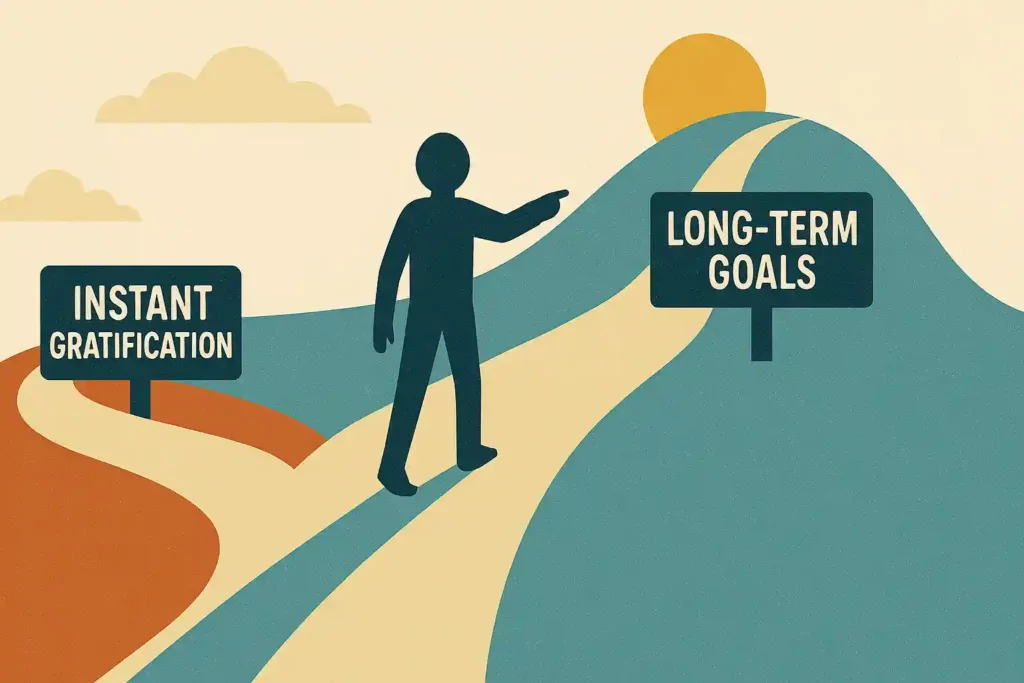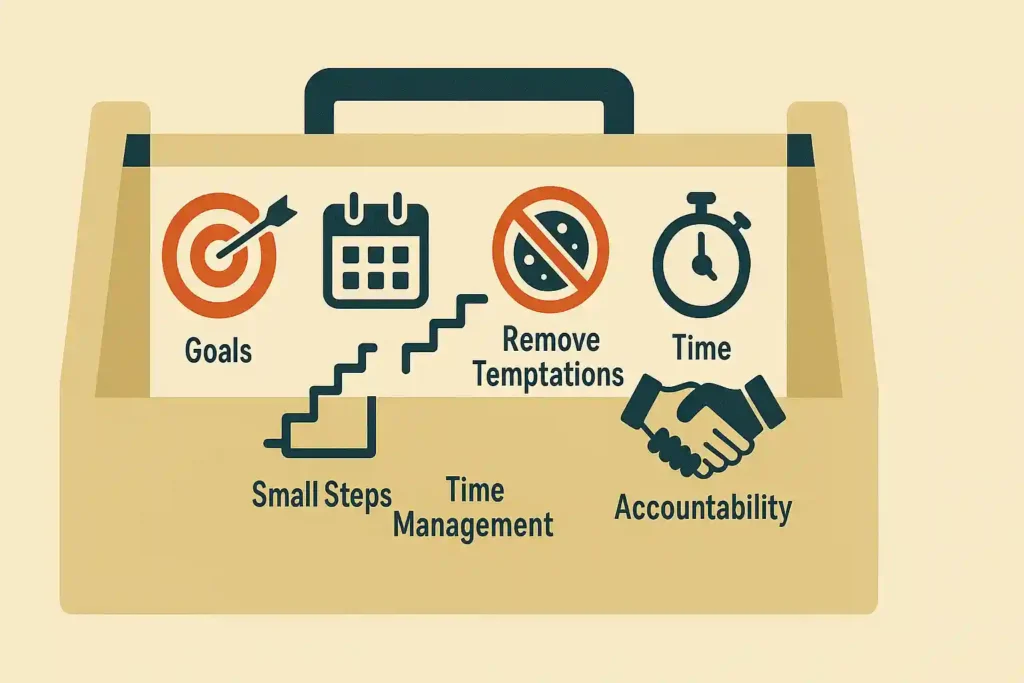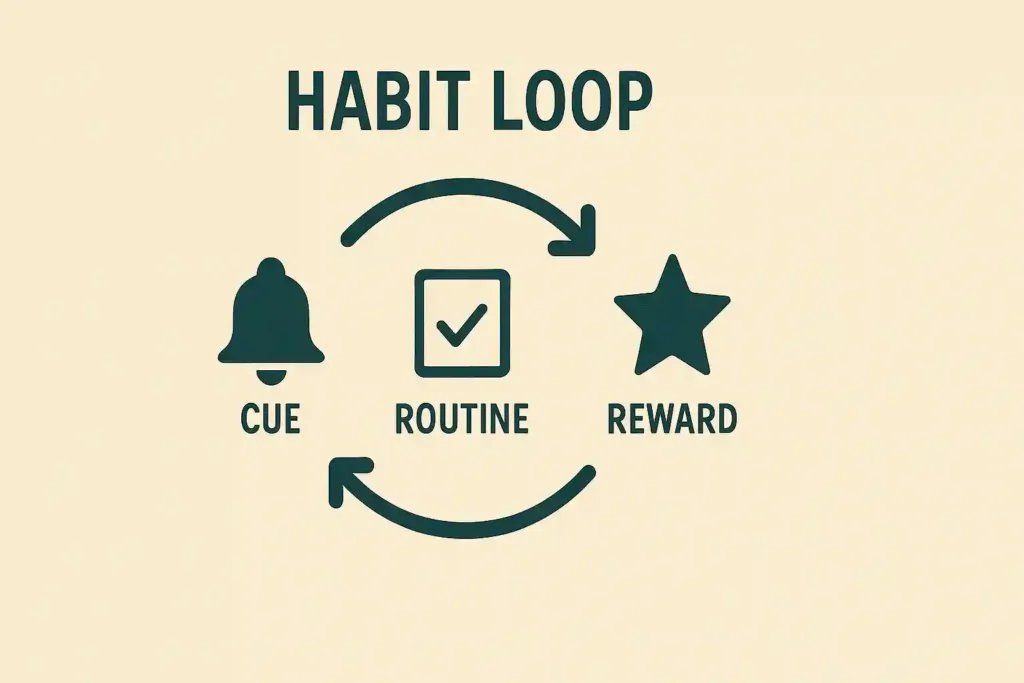Ever set an ambitious goal – starting a fitness routine, learning a new skill, saving money – only to watch your initial burst of motivation fizzle out within weeks, or even days? Do you find yourself hitting the snooze button again, scrolling social media instead of working, or giving in to temptations you later regret? You know what you want to do, but actually doing it consistently feels like a monumental struggle. This gap between intention and action often comes down to one crucial skill: self-discipline.
Many people believe self-discipline is an innate trait – something you either have or you don’t. But the empowering truth is, self-discipline is like a muscle: it can be trained, strengthened, and developed with the right strategies and consistent practice. This guide isn’t about harsh restrictions or unrealistic willpower. It’s about understanding the science of self-control, leveraging practical techniques to discipline yourself, building supportive habits, and cultivating the mindset needed to finally bridge that gap and achieve what you set out to do.

Table of Contents
What Is Self-Discipline, really? (And What It Isn’t)
Let’s clarify this often-misunderstood concept.
Defining Self-Discipline vs. Motivation
These two are often confused, but they play different roles:
- Motivation: The desire or willingness to do something. It’s the spark that gets you started. Motivation is often emotion-driven and can fluctuate wildly.
- Self-Discipline: The ability to take action regardless of how you feel in the moment. It’s doing what you know you should do, even when motivation is low, by choosing long-term benefit over short-term ease or gratification. Motivation gets you going, but self-discipline keeps you going.
Discipline vs. Self-Discipline: Is There a Difference?
While often used interchangeably in casual conversation, there’s a subtle distinction:
- Discipline: Can be external (e.g., rules imposed by a parent, teacher, or employer) or internal.
- Self-Discipline: Is specifically the ability to regulate yourself, to control your own impulses, emotions, and actions to stay aligned with your goals, driven from within. This article focuses on building that internal discipline myself capability.
The Myth of “Just Having More Willpower”
We often talk about willpower as if it’s a fixed reservoir we drain. While research suggests self-control can be depleted temporarily (a concept explored by researchers like Roy Baumeister), viewing it solely as a finite resource is limiting. It’s more productive to see self-discipline as a combination of skills, habits, and strategies that reduce reliance on raw willpower. It’s about making the right choices easier.
The Science Bit: Self-Control as a Limited but Trainable Resource
Early research suggested willpower acts like a muscle that fatigues with use throughout the day (ego depletion). While the extent of this is debated, the core idea holds value: making many decisions or resisting many temptations can make subsequent self-control harder. However, just like a muscle, consistent “exercise” through practicing self-control techniques can strengthen this capacity over time. Think of it as increasing your stamina for making good choices. (Exploring summaries of self-control research from sources like the American Psychological Association (https://www.apa.org) can offer deeper insights).
The Undeniable Benefits of Developing Self-Discipline
Why put in the effort to build self-discipline? The rewards permeate every area of your life:
- Achieving Personal and Professional Goals: Discipline provides the consistency and follow-through required to reach ambitious targets, whether it’s getting a promotion, writing a book, or running a marathon.
- Building Healthy Habits: Sticking to exercise routines, healthy eating plans, consistent sleep schedules, or mindfulness practices relies heavily on self-discipline.
- Overcoming Procrastination and Boosting Productivity: Discipline helps you start tasks even when you don’t feel like it, focus despite distractions, and manage your time effectively.
- Improving Mental Health and Reducing Stress: Feeling in control of your actions and making progress towards goals significantly reduces anxiety and boosts self-esteem.
- Building Resilience and Overcoming Obstacles: Disciplined individuals are better equipped to push through challenges, learn from setbacks, and persevere towards their objectives.
- Strengthening Relationships: Being reliable, keeping promises, and controlling negative impulses (like anger) through self-discipline builds trust and strengthens bonds.
Know Thyself: Assessing Your Current Self-Discipline Level
You can’t improve what you don’t understand. Honestly assess where you are now:
Common Signs of Lacking Self-Discipline:
- Frequent procrastination on important tasks.
- Difficulty sticking to routines (exercise, diet, budget, sleep).
- Giving in easily to impulses or temptations (unplanned purchases, excessive social media).
- Starting projects enthusiastically but rarely finishing them.
- Letting moods dictate actions (e.g., only working out when “feeling motivated”).
- Struggling to manage time effectively.
- Avoiding difficult but necessary tasks.
Identifying Your Personal Procrastination Triggers:
What usually causes you to put things off?
- Fear of failure or judgment?
- Perfectionism (feeling it has to be perfect, so you don’t start)?
- Feeling overwhelmed by the task’s size?
- Lack of clarity on how to start?
- Boredom or lack of interest?
Recognizing Environmental Saboteurs:
What in your environment makes discipline harder?
- Easy access to distractions (phone notifications, TV)?
- Unhealthy snacks readily available?
- A disorganized workspace?
- Social circles that encourage undisciplined behavior?
Awareness of your specific weak points and triggers is the first step to addressing them.
The Toolkit: Practical Strategies to Discipline Yourself
Okay, let’s get actionable. Here are proven techniques to actively build self-discipline:

- Technique 1: Set Clear, Achievable Goals (Your ‘Why’ Power): Vague intentions (“get fit”) are weak. Set SMART goals (Specific, Measurable, Achievable, Relevant, Time-Bound) like “Walk briskly for 30 minutes, 3 times per week.” Knowing exactly what you’re aiming for and why provides direction and fuels discipline.
- Technique 2: Start Small & Build Momentum (Micro-Habits): Don’t try to overhaul your life overnight. Want to meditate? Start with 1 minute daily. Want to write? Start with 1 paragraph. Small, consistent wins build confidence and make habits stick, gradually strengthening your discipline muscle.
- Technique 3: Create Structure & Routine (Reduce Decision Fatigue): Discipline thrives on routine. Schedule important activities (exercise, focused work, meal prep) at the same time each day/week. Having a structure reduces the need to constantly rely on willpower to make the right choice.
- Technique 4: Remove Temptations & Manage Your Environment: Make the desired behavior easier and the undesired behavior harder. If you scroll too much, put your phone in another room while working. If you eat junk food, don’t keep it in the house. Engineer your environment for success.
- Technique 5: Practice Delayed Gratification (Train the Muscle): Consciously practice waiting. Use the 24-hour rule for non-essential purchases. Finish your work block before checking emails. Small acts of resisting immediate urges strengthen your overall self-control.
- Technique 6: Break Down Large Tasks (The ‘Chunking’ Method): Overwhelm kills discipline. Break huge projects (“write thesis”) into small, manageable steps (“research chapter 1 sources,” “outline introduction,” “write first paragraph”). Focus only on completing the next small chunk.
- Technique 7: Time Management Techniques: Use methods like the Pomodoro Technique (work intensely for 25 mins, then short break) or Time Blocking (scheduling specific blocks for specific tasks) to improve focus and fight procrastination.
- Technique 8: Find Accountability: Tell someone your goals. Use a habit-tracking app. Join a group (writing group, gym buddy, online forum). Knowing someone else is aware of your commitment increases follow-through.
- Technique 9: Prioritize Sleep, Nutrition & Exercise (The Foundation): Being sleep-deprived, poorly nourished, or physically inactive significantly depletes cognitive resources needed for self-control. Prioritizing your physical health directly supports your ability to be disciplined. (Reliable health information can be found on sites like the CDC – https://www.cdc.gov/ or similar national health services).
Automating Success: Leveraging Habit Formation for Self-Discipline
Discipline isn’t just about forcing yourself; it’s about building habits that run on autopilot.
Understanding the Habit Loop (Cue, Routine, Reward)
Most habits follow a simple neurological loop:
- Cue: The trigger that initiates the behavior (e.g., time of day, location, emotion, preceding action).
- Routine: The behavior itself (good or bad).
- Reward: The benefit gained from the behavior (e.g., stress relief, satisfaction, energy boost). Understanding this loop is key to changing habits. (Concepts popularized by books like “The Power of Habit” and “Atomic Habits” often draw on this framework).

How to Design Habits That Stick:
- Make the Cue Obvious: Set reminders, put your running shoes by the door.
- Make the Routine Attractive: Pair a desired habit with something you enjoy (listen to a podcast while exercising).
- Make the Routine Easy: Start incredibly small (micro-habits). Reduce friction.
- Make the Reward Satisfying: Track your progress, give yourself small, healthy rewards for consistency, notice the positive feelings.
Replacing Bad Habits with Good Ones:
Identify the cue and reward for the bad habit. Keep the cue, keep the reward (or find a healthier one), but consciously replace the routine with a better one. (e.g., Cue: Stress -> Routine: Eat junk food -> Reward: Temporary comfort. Replacement: Cue: Stress -> Routine: Go for a short walk -> Reward: Stress reduction, energy boost).
Consistency Over Intensity:
Doing something small consistently is far more effective for building habits and discipline than doing something huge sporadically and burning out.
Winning the Inner Game: Cultivating a Disciplined Mindset
Your thoughts and beliefs play a huge role in your ability to be disciplined.
- Embrace Discomfort: Growth and achievement often require stepping outside your comfort zone and doing things that feel hard initially. Accept that discomfort is part of the process, not a sign to quit.
- Practice Self-Compassion, Not Self-Criticism: You will slip up. Beating yourself up creates shame and makes it harder to get back on track. Acknowledge the mistake, learn from it, forgive yourself, and refocus on the next opportunity to practice discipline. Treat yourself with the kindness you’d offer a friend.
- Focus on Identity (“I am someone who…”) vs. Outcomes: Instead of just focusing on “losing weight,” cultivate the identity of “I am someone who prioritizes my health” or “I am a disciplined person.” Actions then align with reinforcing that identity.
- Reframe Failure as Feedback: Setbacks aren’t proof you lack discipline; they are data points. What went wrong? What trigger did you miss? What can you adjust next time?
- Develop a Growth Mindset: Believe that your abilities, including self-discipline, can be developed through dedication and hard work (concept from Carol Dweck’s research). This contrasts with a fixed mindset (“I’m just not a disciplined person”).
Common Questions About Developing Self-Discipline
Let’s address some frequent questions:
- How can I get more self-discipline quickly? While lasting discipline takes time, you can get quick wins by starting small (micro-habits), removing immediate temptations from your environment, and breaking down one overwhelming task into its first tiny step. Focus on building momentum gradually rather than seeking an instant fix.
- What’s the difference between self-discipline and motivation again? Motivation is your desire to act (the spark). Self-discipline is your ability to act even when motivation is low (the engine). You need discipline for long-term consistency because motivation inevitably fades.
- Is it possible to have too much self-discipline? While rare, extreme rigidity or applying discipline towards harmful goals isn’t healthy. Healthy self-discipline is flexible, aligned with positive values, and includes self-compassion. It’s about effectiveness and well-being, not obsessive control or self-punishment.
- Can self-discipline really be learned, even if I feel lazy or unmotivated? Absolutely! Laziness or lack of motivation are often symptoms, not fixed traits. By implementing the strategies here – starting small, building habits, managing your environment, changing your mindset – you are actively learning and strengthening the skill of self-discipline, regardless of your starting point.
- How do I discipline myself to do something I hate? Focus on the “why” (connect it to a larger goal/value). Break it into the smallest possible steps. Use rewards (healthy ones!) for completing steps. Pair it with something enjoyable (music, podcast). Minimize friction (prepare everything in advance). Sometimes, you just have to do it – embracing temporary discomfort builds resilience.
Unlock Your Potential: The Power is Within You
Self-discipline is not a magical gift bestowed upon a lucky few. It is a practical, learnable skill that acts as the key to unlocking your potential and achieving the goals that truly matter to you. It’s about making conscious choices, building supportive habits, managing your internal and external environments, and cultivating a resilient mindset.
The journey to improve self-discipline starts not with a grand gesture, but with a single, small, intentional step. Choose one technique from this guide – just one – and commit to practicing it today, and then again tomorrow. You have the capacity to discipline yourself and build the life you envision.
Call to Action:
What is the biggest challenge you face with self-discipline? And which single technique from this guide will you commit to trying this week? Share your thoughts or questions in the comments below – let’s support each other on this journey!
Found this guide helpful? Please share it with anyone else looking to build stronger habits and achieve their goals!



